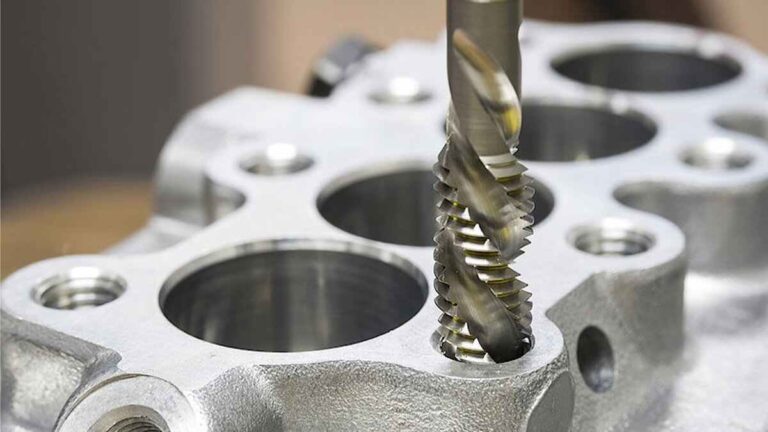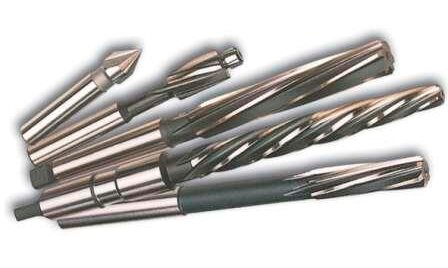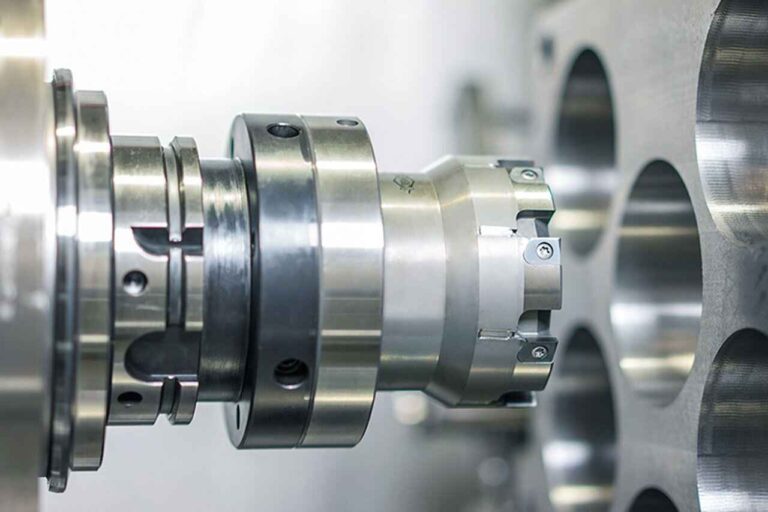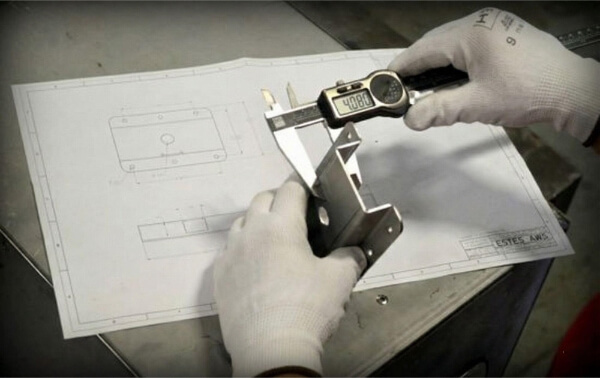Do you need help with imprecise holes in your metal projects? Rough edges and inaccurate dimensions can ruin an otherwise perfect piece. Reaming solves these common issues, providing smooth, precise holes that meet your specifications.
Reaming is a metal cutting process that enlarges and refines existing holes. It uses a rotating cutting tool called a reamer to remove small amounts of material, resulting in a more accurate hole size and improved surface finish.
Let’s explore the reaming process in detail. We’ll cover the tools, techniques, and tips you need to achieve professional-quality project results.

Understanding Reaming Holes
What is Reaming Holes?
Reaming holes is a precision machining technique used to refine existing holes. It involves using a specialized cutting tool called a reamer to remove small amounts of material from the inner surface of a hole.
The reamer rotates through the hole, creating a smooth, accurate finish. This process improves both the size accuracy and surface quality of the hole.
Comparison with Other Hole-Making Processes
Drilling vs. Reaming: Drilling creates initial holes, while reaming refines them. Drilled holes often have rougher surfaces and less precise dimensions. Reaming follows drilling to achieve tighter tolerances and smoother finishes.
Boring vs. Reaming: Boring enlarges existing holes using a single-point cutting tool. It’s suitable for more significant diameter increases. Reaming, on the other hand, removes less material and focuses on improving accuracy and surface quality.
What Is The Purpose Of Reaming Holes?
Reaming serves several vital purposes:
- Improves dimensional accuracy
- Enhances surface finish
- Corrects slight misalignments
- Achieves tighter tolerances
- Prepares holes for precision fits
Types of Reamers
Hand Reamers
Hand reamers are versatile tools designed for manual operation. They feature long, straight flutes and a slight taper at the front for easy entry into the hole.
These reamers work well for small-scale projects and on-site adjustments. However, they’re limited in speed and may not be suitable for high-volume production.
Machine Reamers
Machine reamers are built for power tool use. They come in various styles, including straight flute, spiral flute, and adjustable reamers.
These tools excel in high-volume manufacturing environments. They’re ideal for achieving tight tolerances and consistent results across multiple parts.
Shell Reamers
Shell reamers have a hollow body that fits over an arbor. This design allows for easy replacement of worn cutting edges.
They’re perfect for reaming large holes in rigid materials. Their modular nature makes them cost-effective for industrial applications.
Taper Reamers
Taper reamers create conical holes with precise angles. They’re crucial in applications requiring tapered fits, such as Morse taper tool holders.
Unlike straight reamers, taper reamers can produce angled holes efficiently. They’re indispensable in industries like automotive and aerospace manufacturing.

Benefits of Reaming Holes
Reaming offers several key advantages:
- Improved accuracy: Reaming creates holes with tighter tolerances than drilling alone.
- Better surface finish: The process leaves smoother hole walls, reducing friction in moving parts.
- Consistency: Reamed holes maintain uniformity across multiple parts.
- Extended tool life: Reaming puts less stress on cutting tools than other methods.
- Cost-effectiveness: It’s often cheaper than alternative precision hole-making techniques.
Reaming Holes Materials
Materials Suitable for Reaming
Most metals can be reamed effectively. Common materials include:
- Aluminum
- Brass
- Copper
- Mild steel
- Stainless steel
More complex materials like titanium and some tool steels pose challenges. They may require special reamers or additional processing steps.
Material Considerations
The workpiece material greatly influences tool selection. Softer metals allow for faster reaming speeds, while stiffer materials demand slower speeds and higher torque.
Feed rates also vary by material. Adjust your approach based on the specific metal you’re working with to achieve optimal results.
Techniques and Best Practices
Preparing to Ream
Before reaming, follow these steps:
- Drill a pilot hole slightly smaller than the final size.
- Clean the hole to remove burrs and debris.
- Apply cutting fluid to reduce friction and improve the finish.
Ensure proper alignment of the workpiece. Use clamps or a vise to secure it firmly, preventing movement during reaming.
Manual Reaming Techniques
To ream by hand:
- Insert the reamer carefully into the hole.
- Apply steady, even pressure while turning clockwise.
- Make complete rotations without reversing direction.
- Remove the reamer frequently to clear chips.
Maintain a consistent angle throughout the process. Use guide bushings for straighter holes in thicker materials.
Machine Reaming Procedures
For machine reaming:
- Set the correct spindle speed based on material and reamer size.
- Use a floating reamer holder to compensate for minor misalignments.
- Start with the reamer slightly above the hole, then feed it smoothly.
- Maintain a consistent feed rate throughout the cut.
Ensure proper coolant flow to prevent overheating and extend tool life.
Specialized Reaming Techniques
Blind hole reaming requires careful depth control. Use a depth stop or markings on the reamer shaft for accuracy.
For cross-hole reaming, start with the central hole, then ream the intersecting hole. This approach minimizes burrs at the intersection point.
Tool Maintenance and Troubleshooting
Maintaining Reaming Tools
Proper maintenance extends reamer life:
- Clean reamers after each use to remove chips and coolant residue.
- Store tools in protective sleeves or cases to prevent damage.
- Sharpen reamers when they show signs of wear. Use a precision grinding wheel, maintaining the original cutting geometry.
Troubleshooting Common Reaming Issues
Addressing Surface Finish Problems
Poor surface finish often results from:
- Excessive speed or feed rate
- Inadequate cutting fluid
- Worn or damaged reamer
Adjust parameters and inspect your tool to resolve these issues.
Solutions for Dimensional Inaccuracies
Dimensional problems may stem from the following:
- Incorrect reamer size selection
- Tool deflection during cutting
- Thermal expansion of the workpiece
Use precision measuring tools to verify dimensions and adjust your process accordingly.
Using incorrect or dull reamers
Always match the reamer to your specific task. Replace or sharpen dull tools promptly to maintain accuracy and finish quality.
Failing to clear chips from deep holes
For deep holes, use peck-reaming techniques. Retract the reamer periodically to clear chips and prevent clogging.
Reaming holes drastically under the final size
Start with a pilot hole closer to the final size. A good rule is to ream no more than 0.015 inches in diameter.
Neglecting proper cutting fluid application
Use appropriate cutting fluid for your material. It reduces friction, improves finish, and extends tool life.

Choosing the Right Reaming Holes Tool
Consider these factors when selecting a reamer:
- Material properties
- Hole size and depth
- Production volume
- Required surface finish
For softer materials like aluminum, high-speed steel reamers work well. More complex materials may require carbide-tipped or solid carbide reamers for optimal performance.
Conclusion
Reaming holes is a crucial technique for achieving precise, smooth holes in metalworking. By understanding the types of reamers, proper techniques, and maintenance practices, you can significantly improve the quality of your projects. Successful reaming comes from careful preparation, the right tool selection, and attention to detail.
Do you need a reliable sheet metal parts manufacturer? Shengen is the place to go. We specialize in sheet metal laser cutting, bending, surface finish, and CNC Machining. Reach out to Shengen Today and seek help from professionals!
FAQs
What is the rule of thumb for reaming holes?
The general rule is to ream holes 0.004 to 0.015 inches larger than the pilot hole. This allows enough material removal to achieve the desired finish without overworking the tool.
How often should reaming tools be replaced or sharpened?
Replace or sharpen reamers when you notice a decline in hole quality or increased cutting resistance. For high-volume production, inspect tools regularly, typically after every 50-100 holes.
Can reaming be used for materials other than metals?
While primarily used for metals, reaming can also be applied to some plastics and composites. However, these materials may require specialized reamers and techniques for optimal results.
What are the signs that a reamer is wearing out?
Signs of wear include:
- Rough or inconsistent hole finishes
- The increased cutting force required
- Dimensional inaccuracies in reamed holes
- Visible wear or chipping on cutting edges
How much stock must be left in a hole for reaming?
Typically, leave about 0.010 to 0.015 inches of material for reaming. This provides enough stock for the reamer to work with while minimizing the risk of oversized holes.
More Resources:
Reamers Selection Guide – Source: Global Spec
Reamer Sharpening – Source: Practical Machinist
Hey, I'm Kevin Lee

For the past 10 years, I’ve been immersed in various forms of sheet metal fabrication, sharing cool insights here from my experiences across diverse workshops.
Get in touch

Kevin Lee
I have over ten years of professional experience in sheet metal fabrication, specializing in laser cutting, bending, welding, and surface treatment techniques. As the Technical Director at Shengen, I am committed to solving complex manufacturing challenges and driving innovation and quality in each project.




